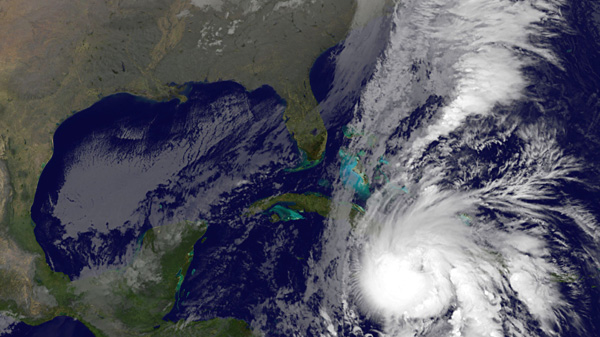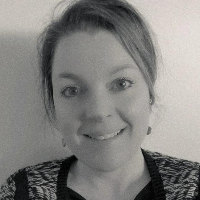| Dame Pearlette Louisy at the Living at the Sharp End of Environmental Uncertainty Conference, Bristol, 17 July 2014. Image credit: Amanda Woodman-Hardy |
On 17 July 2014, Dame Pearlette Louisy, Governor-General of Saint Lucia, came to the University of Bristol to give a keynote talk on the challenges and strategies on environmental uncertainty from Saint Lucia and the Caribbean. Her visit marked the start of a Cabot Institute funded conference at the university, Living at the Sharp End of Environmental Uncertainty, where members of Small Island States (SIS) came together with academics and stakeholders to thrash out the problems facing SIS in a world of global environmental uncertainty. This blog post captures some of the key points from Dame Pearlette’s talk.
Defining environmental uncertainty
Defining ‘environmental uncertainty’ is a tricky prospect. What does the term actually mean? It’s embedded into the Cabot Institute’s strapline of ‘Living with environmental uncertainty’ but it can be hard to define. Dame Pearlette felt there were two principle components to ‘environmental uncertainty’ – a lack of knowledge and a lack of knowledge about how an environmental system will change in the future.
Environmental challenges in the Caribbean
 |
| Hurricane Tomas, 2010. Image credit: Ryder Busby |
The challenges facing the Caribbean are strongly based around environmental uncertainty. It is an area highly prone to devastating natural disasters like hurricanes, earthquakes, landslides and volcanoes. Being a small geographical area its vulnerability is increased especially as its dependence on tourism and agriculture for income can ruin its resilience by the occurrence of one natural event. The limited capacity to develop, coupled with limited human resources and a fragile ecosystem means that the Caribbean’s ability to implement disaster risk reduction is relatively low.
One of the key things that stood out for me in Dame Pearlette’s talk was that the locals are noticing the effects of climate change already. A little rhyme they use about the hurricance season goes like this:
June – Too Soon
July – Standby
August – You must
September – Remember
October – It’s all over
What is shocking is that hurricane season now lasts six months (June to November) leaving communities on tenterhooks for half of the year. Comparing this to the old rhyme, it is clear to see that this is a much longer season than it used to be.
Sadly communities in the Caribbean are particularly vulnerable to all sorts of environmental impact. Those living on reclaimed land or at sea level are prone to flooding by high water tides. Communities also rely heavily on coastal and marine resources leaving them vulnerable when these are damaged by environmental events. There is also the problem of getting insured in the Caribbean. The islands are classified as high risk which has led to very high insurance premiums for people who can ill afford them. This has led to communities not redeveloping after disasters.
Disaster management in the Caribbean
.jpg/800px-Flickr_-_DVIDSHUB_-_USS_Iwo_Jima_assists_Haiti_after_Hurricane_Tomas_(Image_1_of_7).jpg) |
| Haiti after Hurricane Tomas had passed through. Image credit: DVIDSHUB |
Caribbean disaster management is difficult as the people who live there cannot manage disaster responses by themselves. However there are fantastic organisations across the Caribbean who are key to managing risk and are helping to build a resilient and sustainable future:
- The Caribbean Disaster Emergency Management Agency seeks to reduce the risk and loss associated with natural and technological hazards and the effects of climate change to enhance regional sustainable development.
- The Caribbean Community Climate Change Centre coordinates the Caribbean region’s response to climate change, working on effective solutions and projects to combat the environmental impacts of climate change and global warming.
- The Caribbean Catastrophic Risk Insurance Facility serves Caribbean governments and community’s by providing insurance funds to communities quickly after disasters. They also look at building resilience after disaster.
- Environment and Sustainable Development Unit is responsible for providing natural resource and environment services to ensure sustainability of the people’s livelihoods.
- UWI Seismic Research Centre serves as official source of information on earthquakes and volcanoes in the Caribbean.
- Centre for Resource Management and Environmental Studies promotes and facilitates sustainable development.
- Caribbean Youth Environment Network empowers young people and their communities to develop programmes/actions to address socio-economic and environmental issues.
Dame Pearlette was keen to point out that enhanced international cooperation is needed if we are to improve sustainable development in the Caribbean region.
New approaches to Saint Lucia’s landslide problem
Saint Lucia is volcanic in origin and it has steep slopes. Most flat land there is situated in a narrow belt, which is where most settlement is located. Hurricane Tomas hit Saint Lucia in 2010 and it had a large impact on the community and its financial health. Two years later there was a landslide on the main arterial road Barre de L’Isle. This cut the island in two and caused substantial damage to infrastructure, buildings, the East Coast Road, slopes and water catchments including the Roseau Dam which collected a lot of silt. Saint Lucia are still trying to desilt the dam which is causing water shortage problems this year.
It is particularly difficult to reforest slopes after landslides as all the soil is swept away leaving bare rock. Landslide disaster risk is increasing and new approaches to designing and delivering landslide risk reduction measures on-the-ground are urgently needed. In response to that challenge, researchers at the Cabot Institute developed a novel methodology, Management of slope stability in communities (Mossaic), the vision for which is to provide low cost, community-based solutions, such as low cost drains and other related measures to reduce landslide hazard.
You can read more about how the Cabot Institute has been working with St Lucia on this poster and this powerpoint presentation.
Strategies for the Saint Lucia government
Dame Pearlette outlined some key strategies that Saint Lucia is implementing to improve its resilience to natural hazards and environmental uncertainty including a climate change adaptation policy; a strategic programme for climate resilience; a special programme on adaptation to climate change; a pilot programme for climate resilience; and a national environmental education policy and strategy.
However there is one key challenge and that is of funding. Saint Lucia has debts and what is troubling is that it is now difficult to borrow because lenders are not sure of Saint Lucia’s ability to pay their loans back which means the country continues to depend on external assistance of NGOs. Although not an ideal situation, there is interesting work being funded by NGOs. One such NGO is UNDP who are working with communities to achieve environmental sustainability with emphasis on the poor to build capacity.
Education for sustainable development – the future of environmental management?
At the end of Dame Pearlette’s talk, she shared her thoughts on the best way forward. She strongly felt that Education for Sustainable Development (ESD) is the best way to bring about environmental change. Even though no Caribbean policy for ESD exists, there are many groups trying to embed ESD into their institutes of learning. Dame Pearlette said that knowledge management is the management of an organisation’s knowledge assets for the purpose of creating value. The key principle of uncertainty is about lack of knowledge. Therefore knowledge creation and knowledge sharing is paramount for managing sustainability and thus it is the individual or country’s responsibility to ensure it keeps learning to reduce its environmental uncertainty.
Here at the University of Bristol, we also believe that ESD is a worthwhile ambition to embed sustainable development into our own curriculum. At the Cabot Institute we have appointed an intern to undertake a Community Based Learning project to place environmental postgraduate students with organisations in the local community. By embedding our environmental knowledge and sharing it with our communities, we can help build a more sustainable world and more resilient communities to what seems to be a growing plight of environmental uncertainty.
Further reading: The Sinking Pacific: Climate Change and Aid in Tuvalu
 |
| Amanda Woodman-Hardy |

